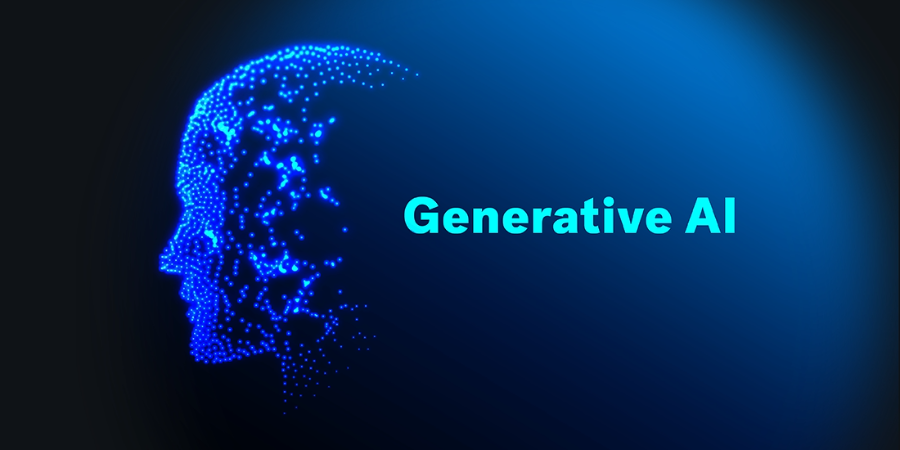Generative AI
Generative AI(GenAI) is a branch of artificial intelligence that broadly refers to machine learning systems that are capable of generating text, graphics, and code using generative models based on the user’s request. This technology has found applications in various industries, including art, music, design, and more.
Attention towards generative AI
As per a recent study conducted by Microsoft, it was revealed that an employee spent approximately 57 percent of their work time on interactions encompassing meetings, emails, and chat-based information sharing. The remaining 43 percent of their work time is utilized for content creation, spanning activities involving documents, spreadsheets, and presentations within the Microsoft 365 suite applications.
The escalating demand for content creation is anticipated to lead to a substantial surge in the need for human resources. By leveraging the power of generative AI, organizations can effectively counteract the inevitable rise in manpower requirements for content creation, thereby optimizing resource allocation.
Over the recent years, our attention has been directed towards the realm of generative AI, especially the broad spectrum of significant language models in the context of artificial intelligence. According to our perspective, generative AI will have a significant impact on the industry. Generative artificial intelligence is capable of creating software in lieu of online content, it will dramatically decrease the amount of human resources required for content creation.
A framework for overseeing generative AI systems
A governance system for generative AI is being developed by several businesses. It essentially consists of three parts.
- Information Security
- Privacy
- Compliance
The development of this system aims to address concerns related to the confidentiality of private information in the context of AI interactions.
Applications of GenAI
Generative AI applications like ChatGPT, GitHub, Copilot, DALL-E 2, Midjourney, Stable Diffusion, Llama 2 and others have captured the attention of users worldwide. For example, when we interact with the ChatGPT with our private data it is being trained and as a result, certain private information that was once private is now essentially become public. The private information has to be protected or secured by using the governance system of GenAI.
Applications of GenAI in Business Sector
GenAI extends its service to the business sector by effectively managing its business processes like Sales, Enterprise risk management, Research, Supply Chain, Manufacturing, FP, Workforce management & culture, Customer Support, Technology, Product development & management, and Marketing.
Why GenAI is poised for more success than earlier generations of AI?
The following are the reasons for the success of Gen AI
- From expertise required to low barriers to entry
GenAI uses natural language interfaces to produce code, language, or graphic responses.
- From specific to cross-the-board expertise
GenAI operates on a global scale, offering marketplace-based access to information and experience across all sectors
- From predetermined to learn-as-you-go process
GenAI functions in collaboration with developers through an iterative process, functioning as more than just a tool and developing its capabilities as developers make better use of it.
- From black-box to glass-box technology
GenAI empowers human-friendly interaction and facilitates automatic documentation
- From neural networks to transformer architecture
Context-based learning is made possible by GenAI’s transformer model design, which decreases the output’s dependency
Challenges in Generative AI
Quality and Coherence: Ensuring that the generated content is of high quality and maintains coherence can be challenging.
Data Dependence: The quality and diversity of content generated by generative AI can be compromised if the training data is limited or biased.
Interpretability: Lack of interpretability hinders trust and makes it challenging to identify and rectify potential issues
Computational Resources: Many advanced generative models are computationally intensive and require substantial resources, making them less accessible for smaller organizations or individuals.
Generalization: Ensuring that a generative model can generalize well to new and diverse inputs is a challenge. Models that overfit specific patterns in the training data might struggle with novel inputs.
Security: Exploited to generate deceitful or harmful content like deep fakes and fake news, sparking significant concerns.
Regulation and Legal Issues: The creative outputs of generative models can sometimes blur the lines between originality and derivative work, leading to potential copyright and intellectual property challenges.
Human-AI Collaboration: Striking the right balance between automation and human input is an ongoing challenge.
Adversarial Attacks: Small changes in input data lead to unexpected or malicious outputs.
Conclusion
Even if generative AI doesn’t entirely replace particular jobs, it will transform how the job is performed, forcing employees to adopt novel responsibilities and progress beyond monotonous and repetitive tasks.
“In the hands of generative AI, data becomes the clay for sculpting visions of tomorrow.”
Source
https://ai.google/discover/generativeai/
https://www.nvidia.com/en-us/glossary/data-science/generative-ai/

